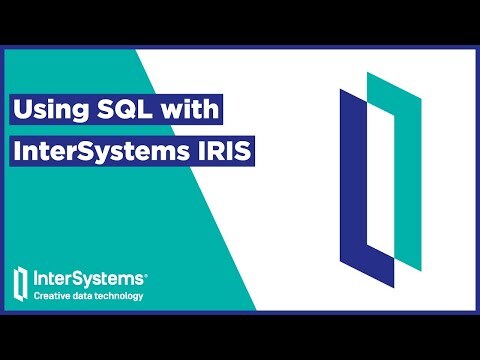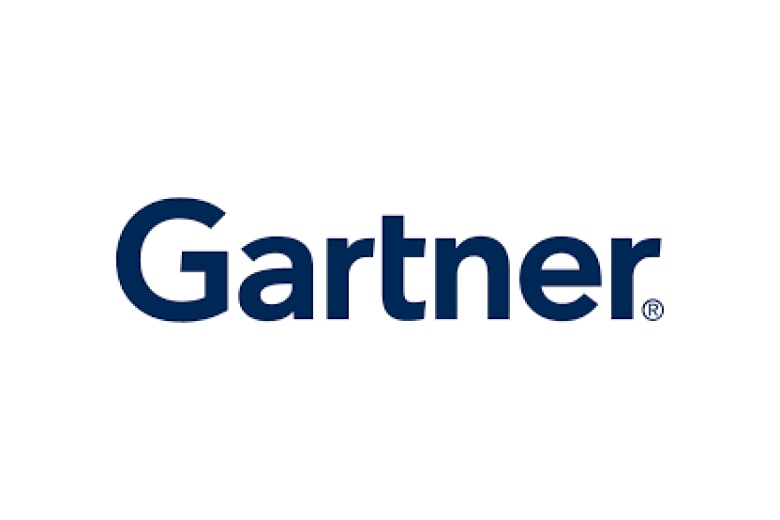A database management system (DBMS) is a software system that handles the storage, retrieval, and manipulation of data. It acts as an interface between users and databases, allowing for efficient data operations.
DBMSs provide several key functions:
- Data definition: Creating and modifying database structures
- Data manipulation: Inserting, updating, and deleting data
- Data querying: Retrieving specific information
- Access control: Managing user permissions and security
Popular DBMSs include MySQL and PostgreSQL. Each system offers unique features and capabilities to suit different organizational needs.
The Basics of DBMS
Effective data organization is critical for database performance and usability. Data is typically stored using tables, which consist of rows (records) and columns (fields).
The database schema defines the overall structure, including:
- Tables and their relationships
- Data types for each field
- Constraints and rules for data integrity
Data models help visualize these structures. Common models include:
- Relational: Uses tables with predefined relationships
- Object-oriented: Represents data as objects with attributes and methods
- NoSQL: Offers flexible schemas for unstructured data
Proper data organization ensures efficient storage, quick retrieval, and accurate reporting of information within the database system.
Database Models and Types
Database management systems use various models to organize and structure data. These models determine how data is stored, accessed, and related within the system.
Relational Database Management System
Relational database management systems (RDBMS) organize data into tables with rows and columns. Each table represents an entity, and relationships between entities are established through keys.
RDBMSs use SQL (Structured Query Language) for querying and manipulating data. They implement normalization to reduce data redundancy and ensure data integrity. Popular RDBMS platforms include Oracle Database, MySQL, and Microsoft SQL Server. These systems provide ACID (Atomicity, Consistency, Isolation, and Durability) compliance, ensuring data consistency and reliability. Transactions in RDBMSs maintain Atomicity, Consistency, Isolation, and Durability.
Some modern RDBMSs, like InterSystems IRIS®, offer hybrid capabilities, combining relational and non-relational features in a single platform.

NoSQL DBMS and Types
NoSQL databases provide flexible data models that can handle unstructured and semi-structured data. They are designed for scalability and performance in distributed environments.
NoSQL database types include:
- Document databases: Store data in JSON-like documents (e.g., MongoDB)
- Key-value stores: Simple key-value pairs for fast retrieval (e.g., Redis)
- Column-family databases: Store data in column families (e.g., Cassandra)
- Graph databases: Optimize for interconnected data (e.g., Neo4j)
NoSQL systems often sacrifice some ACID properties for increased scalability and performance. They are well-suited for big data applications and real-time web applications. Platforms like InterSystems IRIS integrate NoSQL and relational capabilities, offering flexibility in data modeling and querying.
Database Architecture and Components
Database management systems consist of several interconnected components that work together to store, retrieve, and manage data efficiently. The core elements include the database engine, query processor, and various catalogs for storing metadata.
Database Engine and Query Processor
The database engine is the central component responsible for data storage and retrieval. It handles read and write operations to the physical storage devices. The query processor interprets and executes user queries. It parses SQL statements, optimizes query plans, and coordinates data access through the storage engine. The optimization engine analyzes queries to determine the most efficient execution path. It considers factors like table sizes, indexes, and available resources. The log manager tracks all database changes, enabling recovery in case of system failures. It records transactions and maintains data consistency.
Metadata and Catalogs
The system catalog stores information about the database structure, including table definitions, column types, and relationships between tables.
Metadata catalogs contain detailed information about data objects, such as tables, views, and indexes. This metadata helps the DBMS manage and access data efficiently.
The database dictionary acts as a reference for all objects within the database. It includes information on user permissions, constraints, and stored procedures.
These catalogs play a vital role in query optimization and data integrity enforcement. They provide the DBMS with the necessary information to manage complex data structures and relationships.
Data Definition and Manipulation
Database management systems provide powerful tools for defining data structures and manipulating stored information. These capabilities allow users to create, modify, and interact with databases efficiently.
Tables, Rows, and Columns
Tables form the core structure of relational databases. They consist of rows (records) and columns (fields) that organize data logically. Each table represents an entity or concept, such as customers or products.
Columns define the attributes of the entity. For example, a customer table may have columns for name, address, and phone number. Each column has a specified data type like text, number, or date.
Rows contain the actual data entries. Every row in a table corresponds to a single record or instance of the entity. For instance, each row in a customer table would represent one unique customer.
Primary keys uniquely identify each row, while foreign keys establish relationships between tables. This structure enables complex data modeling and efficient querying.
SQL and Database Operations
SQL plays a central role in interacting with and managing relational databases. It enables users to perform various operations on data, from simple queries to complex data manipulations.
Role of Structured Query Language (SQL)
SQL serves as the standard language for communicating with relational database management systems. It allows users to create, read, update, and delete data in databases. SQL provides commands for defining database structures, manipulating data, and controlling access.
Basic SQL operations include SELECT statements for retrieving data from tables, INSERT for adding new records, UPDATE for modifying existing data, and DELETE for removing records. These commands form the foundation of database interactions.
SQL also supports more advanced features like joins, which combine data from multiple tables, and aggregations for summarizing data. It enables the creation of views, stored procedures, and triggers to enhance database functionality.
Transform your data infrastructure with a next-generation database management system.
Data Definition Language (DDL)
Data Definition Language is a subset of SQL commands used to define and manage database structures. DDL statements allow users to create, alter, and delete database objects like tables, indexes, and views.
Key DDL commands include:
- CREATE: Establishes new database objects
- ALTER: Modifies existing object structures
- DROP: Removes objects from the database
- TRUNCATE: Deletes all data from a table while keeping its structure
DDL also handles constraints, which enforce data integrity rules. Common constraints include:
- NOT NULL: Ensures a column always contains a value
- UNIQUE: Prevents duplicate values in a column
- PRIMARY KEY: Identifies each row uniquely
- FOREIGN KEY: Maintains referential integrity between tables
Data Manipulation Language (DML)
DML is a different subset of SQL commands used to manipulate data within database tables. These operations allow users to insert, update, delete, and retrieve information.
The four fundamental DML operations are:
- SELECT: Retrieves data from one or more tables
- INSERT: Adds new rows to a table
- UPDATE: Modifies existing data in a table
- DELETE: Removes rows from a table
DML statements often use clauses like WHERE to specify conditions for data selection or modification. Joins allow users to combine data from multiple tables based on related columns.
Advanced DML features include subqueries, which nest one query within another, and transactions, which group multiple operations into a single unit of work to maintain data consistency.
Advanced SQL Techniques
Advanced SQL techniques go beyond basic data retrieval and manipulation. They include complex queries, performance optimization, and data analysis capabilities.
Subqueries allow nesting of SELECT statements within other SQL commands, enabling more sophisticated data extraction. Window functions provide ways to perform calculations across sets of rows related to the current row.
Common Table Expressions (CTEs) simplify complex queries by breaking them into more manageable parts. Indexes improve query performance by speeding up data retrieval operations.
SQL also supports transactions, ensuring data integrity during multiple operations. User-defined functions extend SQL's capabilities, allowing custom operations tailored to specific needs.

Security and Data Integrity
Database security and data integrity are fundamental aspects of database management systems. They protect sensitive information from unauthorized access and ensure data remains accurate and consistent.
Access Control and Authentication
Access control limits who can view or modify data within a database. User authentication verifies identities before granting access. Role-based access control assigns permissions based on job functions.
Multi-factor authentication adds an extra layer of security by requiring multiple forms of verification. This can include passwords, biometrics, or security tokens.
Regular audits help identify potential vulnerabilities in access controls. Automated monitoring tools can detect suspicious activities and alert administrators to potential security breaches.
Encapsulation and Encryption
Encapsulation isolates data and internal database functions from external applications. This prevents direct manipulation of data and reduces the risk of attacks.
Encryption protects data by converting it into an unreadable format. End-to-end encryption secures data during transmission. Encryption at rest safeguards stored data.
Transport Layer Security (TLS) encrypts data in transit between clients and servers. Database-level encryption protects specific columns or tables containing sensitive information.
Transaction Management and Concurrency
Transaction management and concurrency control are fundamental aspects of database systems. They ensure data integrity and consistency when multiple users access and modify data simultaneously.
ACID Properties
Transactions in database systems adhere to ACID properties:
- Atomicity: A transaction is treated as a single, indivisible unit. It either completes entirely or fails completely.
- Consistency: Transactions maintain the database in a valid state. All constraints and rules are enforced.
- Isolation: Concurrent transactions do not interfere with each other. Each transaction appears to execute in isolation.
- Durability: Once a transaction is committed, its changes are permanent and survive system failures.
Concurrency Control Mechanisms
Concurrency control mechanisms prevent conflicts when multiple users access shared data. Common techniques include:
- Lock-based protocols: Transactions must acquire locks on data items before accessing them. This prevents other transactions from modifying the same data simultaneously.
- Timestamp-based protocols: Each transaction is assigned a unique timestamp. Conflicts are resolved based on these timestamps.
- Optimistic concurrency control: Transactions proceed without locking. Conflicts are checked at commit time and resolved if necessary.
- Multiversion concurrency control: Multiple versions of data items are maintained to allow concurrent read access without blocking.
These mechanisms balance the need for concurrent access with the requirement for data consistency. They enable efficient use of system resources while preventing data conflicts and ensuring transaction isolation.
Backup, Recovery, and Maintenance
Effective database management requires robust backup strategies and well-planned recovery procedures. Regular maintenance tasks ensure optimal performance and data integrity.
Strategies for Data Backup
Database backup methods vary based on system requirements and data volume. Full backups capture the entire database, while incremental backups only store changes since the last backup. Differential backups save all modifications since the most recent full backup.
Automated scheduling helps maintain consistent backups. Many organizations implement a combination of daily incremental and weekly full backups. This approach balances storage needs with recovery speed.
Cloud-based backup solutions offer scalability and off-site storage. They can complement or replace traditional on-premises backups. Encryption protects sensitive data during transfer and storage.
Testing backups regularly ensures they can be successfully restored when needed. This practice helps identify and address any issues before a real emergency occurs.
Disaster Recovery Planning
A comprehensive disaster recovery plan outlines steps to restore database operations after a major disruption. This plan should include:
- Recovery Time Objective (RTO): Maximum acceptable downtime
- Recovery Point Objective (RPO): Maximum acceptable data loss
- Prioritized list of critical databases and applications
- Detailed recovery procedures for various scenarios
Geographic replication creates database copies in multiple locations. This strategy protects against site-wide failures and natural disasters. Automated failover mechanisms can quickly switch to a standby database if the primary system fails.
Point-in-time recovery allows restoring a database to a specific moment before a failure occurred. This capability is valuable for addressing data corruption or accidental deletions.
Regular drills help team members practice recovery procedures. These exercises identify areas for improvement and ensure staff readiness during actual emergencies.

Emerging Technologies in Database Management
Database management systems are evolving to meet modern data needs. New technologies are enhancing performance, scalability, and flexibility for businesses of all sizes.
Distributed SQL and Cloud DBMS
Distributed SQL databases are gaining traction as organizations seek scalable, consistent solutions for cloud and microservices environments. These systems offer strong consistency and horizontal scalability across multiple nodes or data centers.
Cloud-native databases are designed to take full advantage of cloud infrastructure. They provide elasticity, automatic scaling, and seamless integration with cloud services. Many traditional database vendors now offer cloud versions of their products.
Data sharing capabilities are becoming more prevalent, allowing organizations to securely share data across different departments or even with external partners. This facilitates collaboration and helps break down data silos.
DBMS in Automation and AI
Artificial intelligence is transforming database management systems. AI-powered tools can automate routine tasks like performance tuning, capacity planning, and query optimization. This reduces the workload on database administrators and improves overall system efficiency.
Machine learning algorithms are being integrated into DBMSs to provide predictive analytics and anomaly detection. These features help organizations derive more value from their data and identify potential issues before they become critical.
Automated database management systems are on the rise. These tools use AI to handle various aspects of database administration, including backup and recovery, security, and performance monitoring. This automation allows IT teams to focus on more strategic tasks.
How InterSystems IRIS Can Revolutionize Your Database Management
InterSystems IRIS goes beyond traditional database management systems by offering a comprehensive, multi-model platform that addresses the complex data needs of modern businesses.
With its ability to handle relational, document, key-value, and graph data models within a single system, InterSystems IRIS provides unparalleled flexibility and efficiency.
This versatility means you're not just creating databases - you're building a robust data ecosystem that can adapt to your evolving business requirements. InterSystems IRIS excels in:
- Data Integration: Seamlessly combine data from various sources and formats.
- Real-time Analytics: Process and analyze data as it arrives, enabling instant insights.
- Scalability: Easily scale up or out as your data volumes grow, without compromising performance.
- Advanced Security: Protect your valuable data assets with state-of-the-art security features.
With its powerful SQL support and intuitive data definition tools, InterSystems IRIS simplifies the process of creating, managing, and optimizing your databases.
Experience the power of a truly unified database management system that can handle your current needs and scale for future growth. Try InterSystems IRIS today and discover how it can transform your data management strategy, driving your business towards greater innovation and success.

DBMS Frequently Asked Questions
Network DBMS allow multiple parent-child relationships. Object-oriented DBMS store data as objects, similar to object-oriented programming languages.
Relational databases ensure data consistency through ACID properties. Non-relational databases often prioritize scalability and performance over strict consistency.
DBMS also handle concurrent access, backup and recovery. They provide interfaces for users and applications to interact with the stored data efficiently.
Access control lists (ACLs) define user permissions. DBMS also maintain audit logs to track data modifications and access attempts.
DBMS support concurrent access, allowing multiple users to work with data simultaneously. They also offer backup and recovery mechanisms to prevent data loss.
































